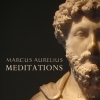
We’re well into the 21st century, and a multiplicity of ancient religions and philosophies are still accepted around the world. Though some are still subject to discussion and disagreement. Some of them have had to make adjustments to retain their believers. But what about a 2500 year old religion? How has it found ways to remain relevant?
Tradition and modernity
Buddhism was developed from ancient teachings that would seem to be relevant to its population during that time. But when we look again, we can see that it is as modern as many ancient Greek and Roman philosophies have proven to be.
It’s amazing going through the pages of the Dhammapada, and reading sentences that fit perfectly with what we’re facing right now.
“Better than a thousand hollow words is one word that brings peace.” (The Dhammapada)
When we think about the Kalama Sutta where the Buddha encourages the questioning of teachings and sages alike. And where he also exhorts people to live their own experiences, we realize that this is an invitation we must make every day. We must not accept ‘unquestionable’ truths. Real faith is the one that can go through the fire of doubt and still remain pure.
The Anapanasati Sutta is the one that speaks of mindfulness. It’s one of Buddha’s discourses that teaches people to be present by developing control over their breathing. All meditation methods start with the focus on breathing, and mindfulness is very popular nowadays, and slowly becoming part of mainstream psychology.
Gaining popularity through revolutionary acts:
Buddhism became very popular in the 20th century. Many westerners left their homes and travelled to Asia. There, they studied Buddhist beliefs and absorbed them. Many of them came back with the gifts they learned along the way, and made them available to the west.
Practices like meditation, mindfulness, vegetarianism and transcendence have become famous over the years.
After the Dalai Lama left Tibet to ask for help for his people, and was prohibited to return, the news spread fast and people became interested in learning about Buddhism. How could such a peaceful folk pose so much threat to the communist regime that had been established in China?
In exile, his Holiness started writing and lecturing and sharing his joy through everything he did. This drew attention from the world, because his peaceful stance against a dictatorial government was unseen before.
However, the event that caused most commotion throughout the world involved the Vietnamese monk, Thich Quang Duc. Who decided to sit in the lotus position in a public space in Saigon. He proceeded to set himself on fire in front of the press, citizens and the military. This was his rebellion against the persecution of the Buddhist sect at the time. There was no screaming from his part. It was an act of self sacrifice for the common good.
Buddhism gained popularity after all these events, people who were not familiar with Buddhism wanted to know more.
Buddhism and science
When we talk about Buddhism in our current day, my favorite part is the relationship it has with science. Quantum physics to be more specific.
The Buddhist concept of impermanence can be scientifically explained by the behavior of atoms. They’re not still and as we come into contact with other things in the environment, those molecules transform as well.
We must also talk about energy, the energy that runs through specific matter. That energy is also capable of modifying the structure of the molecules it encounters.
Neuroscience and meditation:
Another great area that has developed in recent years is neuroscience. It has been proven that our neurons are not irreplaceable (they die, but others are born every day). This is called neurogenesis. This great discovery has also been the key to reshaping our knowledge of brain functions.
For example, one side of the brain is responsible for recognizing melody, harmony, music. The opposite side is responsible for speech capacity, it’s also the one that recognizes the words on a piece of paper and makes them come out of our mouths.
Brain lesions in the hemisphere responsible for speech have been recovered by developing a bridge between the two sides, the solution: poetry, words that through rhymes produce melody.
It’s a trick. The brain doesn’t recognize it as speech, because of the words, but can recognise the harmony.
Neuroplasticity is the ability of the brain to reshape itself. It has also been proven by renowned universities that happiness, good thoughts, exposure to positive ideas reshape the functions of the brain in a way that decreases depression. All kinds of thoughts encouraged during meditation.
Long story short, what you focus on grows, this is the truth of life. The best part is that once you begin to transform your own brain, this affects everyone around you: happiness is contagious.
Meditation is a very powerful tool for neuroplasticity just as much as positive thinking is. There is living proof of that, his name is Matthieu Riccard, a french scientist, disciple of a Nobel prize winner, son of a great philosopher. He traded it all for a life dedicated to Tibetan Buddhism. He took part in a Harvard experiment on happiness and was named the happiest man in the world. Could it all be a coincidence?










